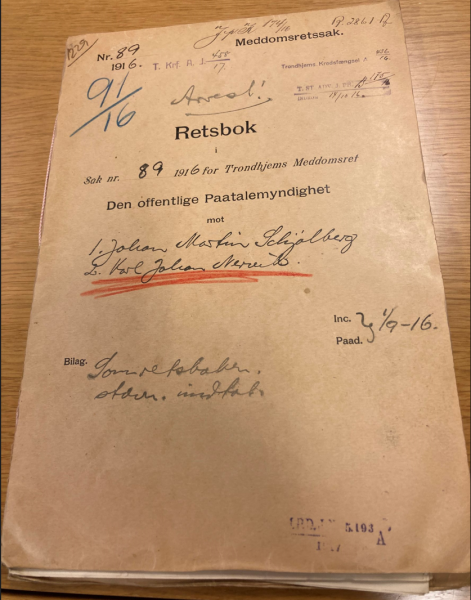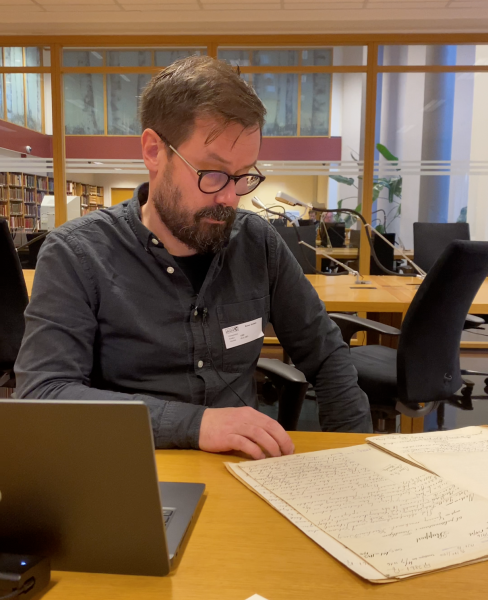“He cannot live without him.”

Anna Nervik, 28, turned up at the Trondheim Police Chamber in May 1916. She explained that her husband was in an "unseemly relationship" with another man. Thus began a process that would lead to prison and punishment, but also a life-long cohabitation.
The two men
Karl Nervik (1889-1959) was born in Orkdal, but moved to Trondheim where he worked as a painter. He got married in 1913, and his wife Anna (1887-1966) originally came from Titran on the island of Frøya. They had a son. Karl worked as a painter. Johan Schjølberg (1866-1955) was a municipal worker and a widower. He was also born in Orkdal.
In breach of his duties
Karl and Johan began a love affair in the autumn of 1915, and in the spring of 1916, they lived together at the address of the latter mentioned. The address was Fagerviken, which is today Bynesveien 42. This resulted in Anna Nervik reporting the two of them in May 1916 for having an unseemly homosexual relationship (§ 213) and her husband for violating his duties towards his spouse and children (Johan was reported for complicity in the latter).
Revealed
Initially, the police reacted by giving Johan and Karl a warning and requested that they stay away from each other. That, however, didn’t happen. On the contrary, they went to the mining community of Løkken verk where they rented a room in one of the workers' barracks and found employment.
When this was revealed, both were arrested. According to the police report, on July 4th, Karl said that "he has developed such love for Schjølberg that he cannot be without him. And the relationship that has arisen between him and Schjølberg is such, that no one can fully comprehend it or manage to tear it apart." The case was conducted in the court of inquiry in Trondheim over several days in July and August 1916. The case concluded with sentences of 60 days imprisonment for them both for breach of sections 213 and 219 of the Penal Code.
Cohabitation
Perhaps the most unexpected thing in this case is what happened after the sentence was served. The two lived together for the rest of their lives. We do not know where they lived during the first years, but from 1918 they lived together at different addresses in Trondheim. The last address they lived at was Ilevolden 3b, which is today Nidareid 7. They moved in there around 1940 and lived there until they died (Johan in 1955, Karl in 1959). It does not seem that the "scandal" in 1916 had too many implications for the two of them. We know that children, grandchildren, great-grandchildren and others were present at Johan's funeral. He was described as an "old, laborious and meek man".
Further research
The Queer Archive continues to investigate this matter. The case is of interest because it gives us an insight into voices from lower social strata. Also, Johan and Karl reflect on the love of people of the same sex. Moreover, it is possible to follow them further in life through address books, censuses etc.. Further research can hopefully give us a deeper understanding and we are particularly interested in finding photos of the two. For more details about what we currently know - listen to our podcast about this case (in Norwegian only).
LAST UPDATED 2023/03/17


